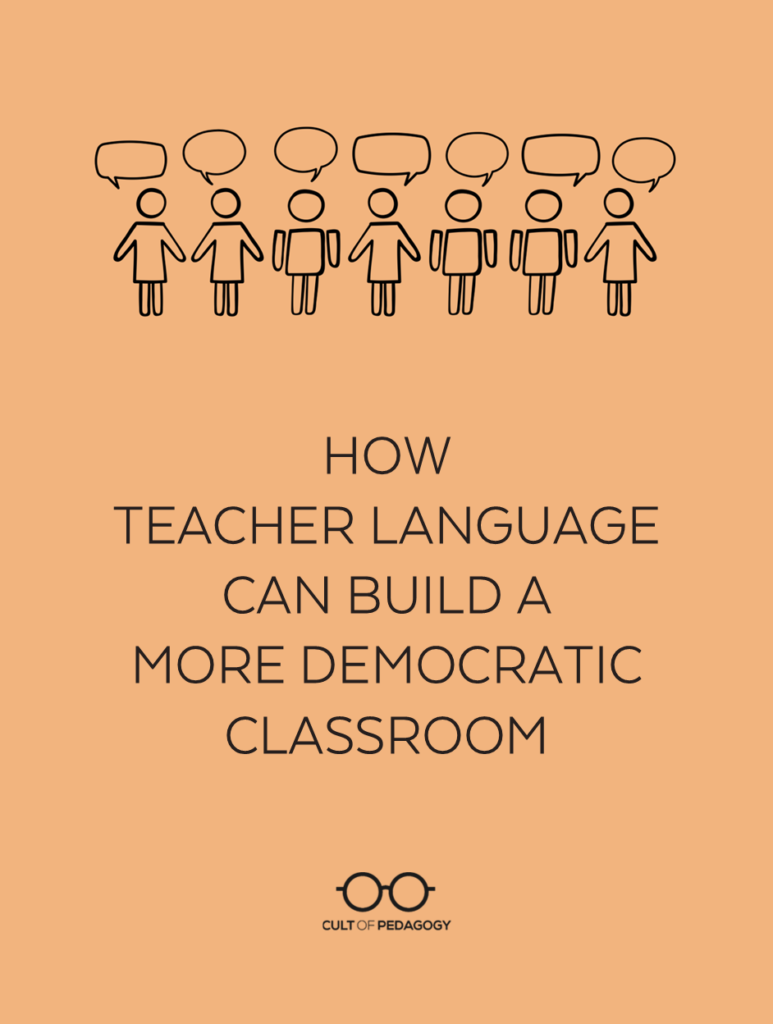
Listen to the interview with Peter Johnston (transcript):
Sponsored by Listenwise and The Gilder Lehrman Institute
This page contains Amazon Affiliate and Bookshop.org links. When you make a purchase through these links, Cult of Pedagogy gets a small percentage of the sale at no extra cost to you. What’s the difference between Amazon and Bookshop.org?
Children, just like adults, learn better in a supportive environment in which they can risk trying out new strategies and ideas and stretching themselves intellectually. But learning communities are not simply about being supportive. For them to be evolutionary, they also require challenge from different perspectives to help expand possibilities, check each other’s thinking, and counter self-interest. Children must learn how to construct learning communities in which participants take each other’s ideas seriously, grow knowledge, and solve problems together so they are not dependent on the teacher to arrange such communities for them.
Some teachers are particularly good at building democratic classrooms — learning communities in which individuals feel valued and supported, and that sustain productive and critical learning. They often do this by intentionally choosing language that shapes the learning environment. The examples below show how they pull this off, teaching children to build caring and respectful learning communities in which participants take each other’s ideas seriously.
Phrases that Cultivate a Democratic Learning Community
“Let’s do some thinking together about this book.”
Rather than engaging in a ‘read aloud,’ we engage in “thinking together about a book (or science, math, etc.).” A read aloud is something a teacher does while students listen. Thinking together demands collective participation toward a collaborative end.
“What are you thinking?”
At an evocative point in a story (or a point of uncertainty in science or social studies), we ask open questions like: “What are you thinking?” We might prompt them to “talk to your neighbor about it” rather than starting with the whole class, so that all the children get to have a voice in a short time, and consolidate their thoughts before bringing them to the whole class. Subsequently asking “what are you thinking now?” reminds children that through discussion they may come to think differently.
“Did you hear what Tim said?”
In a discussion that had become a little noisy, Pegeen Jensen asked her first graders: “Did you hear what Tim said?” Then, prioritizing their careful listening to each other, she asked Stephen to repeat Tim’s comment so they could all think about it. If instead she had asked Tim to repeat what he had said, or simply repeated it herself, her students would get the message that they didn’t need to listen to each other, just wait until the teacher arranged for them to hear the important stuff.
“It’s your job to ask them to explain.”
Listening carefully requires making sure that you understand the speaker, which means asking questions when necessary, as Cheryl McMann pointed out to one of her fifth graders who said to her that he didn’t understand what a peer had said. Cheryl said, “When you don’t understand what someone said, remember, it’s your job to ask them to explain.” Her relational observation insists on listeners’ agency and responsibility — a responsibility because, it turns out that feeling heard really matters. It has a similar effect to experiencing an act of kindness.
“Give everyone a chance to say something so you don’t miss different ways of thinking.”
Like adults, students sometimes forget to listen to each other, so we remind them to do so and why it’s important. For example, when fourth grader Melinda had stopped listening to her partner Anthony’s observations about his book, their teacher Don Reed asked Melinda about Anthony’s comments so she realized she had not been listening well and asked Anthony to repeat what he said. A good discussion followed.
Don explained what happened like this: “So, Melinda, you really listened to Anthony’s idea, and the two of you stayed focused on it and talked more about it. Now you both understand something about this text and what the author is doing that you didn’t understand before.” Don’s comment helped them see the causal, strategic relationship between careful listening, an interesting discussion, and new learning — a self-interest motive for listening that would likely have slipped by unnoticed. If we expect children to do these things, we need to help them see what’s in it for them.
A planned lesson on this would likely be less effective than capitalizing on the concrete event as it happened. However, some comments, like the following, explicitly insist on this understanding and can be pre-planned: “Make sure each person has a chance to say something so that you’re sure you don’t miss different ways of thinking about it.” This comment provides the self-interested frame for ensuring all voices are heard.
“We have two different points of view.”
Children need to expect a multiplicity of perspectives. So, for example, Cheryl McMann summarized for her fifth graders two perspectives that arose in a book discussion: “So, we have two different points of view. We’re thinking [summarizes perspective 1] or maybe [summarizes perspective 2]. What do the rest of you think?” Notice that she didn’t name the individuals who contributed the ideas. Rather, she says “we’re thinking…” marking the ideas as part of their collective agency and responsibility in thinking together.
When the ideas are separated from people they can be critiqued. And when that happens, people are more creative, they generate more ideas, and they are more satisfied with the outcomes than when ideas are associated with particular people or when there is no criticism at all. We might still identify children’s contributions to the discussion, associating them instead, with strategic acts like pushing back, building on, providing evidence or logic, inviting in a new voice, and so forth. Having different perspectives in your head allows you to monitor and self-check your own thinking. Having multiple perspectives on the table provokes deeper thinking in order to resolve the uncertainties they produce. This is how children learn to use and manage the social and intellectual space they inhabit.
“Why don’t you invite Shauna into the conversation?”
We can also encourage children to notice when certain voices are missing from the conversation, and help them see how bringing them into the conversation will be individually and collectively beneficial. During a second and third grade book discussion group, a group member, Claire, invited into the conversation Shauna, a quiet student who often missed classroom discussions to go down the hall to her special education class — a practice that can make such students feel like outsiders in their own class. An excellent discussion ensued.
Teacher Kathy Champeau drew the students’ attention to their enjoyment of the discussion then asked: “If Claire hadn’t invited Shauna into the conversation, what would have happened?” Her question requires the students to construct the causal relationship between inviting in the quiet student and the quality of the ensuing experience — a self-interest motive. But it’s worth considering what led Claire to invite Shauna into the conversation. Kathy had noticed that Shauna looked as though she had something to say but had not been able to get into the conversation. So she asked the group whether they noticed anything about Shauna, and Claire said that she thought Shauna had something to say but hadn’t been able to say it. Kathy asked whether anyone else had had that experience and what it felt like — expanding their empathic concern for Shauna — a caring motive for inviting her contribution. Moving from empathy to action, Kathy commented: “So when we see this happening, when people aren’t able to get their thinking into the conversation, we have to invite them in.” Keeping the ball in Claire’s court, she added, “So why don’t you invite her into the conversation, Claire?” Notice that Kathy didn’t invite Shauna in herself. At every step of the way she kept Claire as the agentive person strategically expanding the discussion by inviting the quiet student in.
Following the successful event, Kathy could privately ask Claire how that felt to have helped Shauna and thus contributed to the learning community. Helping Claire make that connection between her already positive narrative makes it even more likely the behavior will be repeated. During a different book discussion in the same class, a more vociferous student invited one of the quieter students into the conversation. At the end of the conversation, another student observed: “It was a good thing we asked Yacoub to speak because he had something important to say.” Students’ talk is very much influenced by the talk in which they are immersed.
“Are there any other ways to think about this?”
Disagreement is a powerful engine for growth, so we ask things like, “Would you agree with that?” or “Could someone play the devil’s advocate?” or “Are there any other ways to think about this?” These invite disagreement that sets up the need to articulate the logic of one’s position. As one student articulates their logic, attempting to persuade others, and another strategically responds with their logic, the collective thinking becomes more complex and nuanced. Children who are used to this sort of invitation, and thus engage in dialogue, use words like “because,” “if,” and “why” more often than students who are not used to engaging in dialogue.
Disagreement, more than agreement, moves children’s thinking forward. Knowing how others think also improves children’s ability to imagine the intentions and logic of other social beings, something they will bring to their critical reading, their persuasive writing, and their social relationships. The invitation to disagree indicates that disagreement is expected, indeed normal — a necessary understanding for thinking clearly and for participating in a democratic society.
As a follow up, we will want to remind the students of the causal value of disagreement, the collaborative nature of thinking together and their individual and collective agency, perhaps with a comment like: “Thanks Damon and Zelda. If you hadn’t disagreed, we never would have got to the bottom of that.”
Beyond Teacher Talk: Shaping Student Language with Anchor Charts
When it comes to the whole class, children need a shared set of principles for participation. If students play a role in generating and updating those principles, they will have less difficulty adhering to them. In my experience and in reported research, the principles people generate quite consistently include the need for listening to and respecting each other, ensuring that everyone’s voice is heard, giving reasons for agreement or disagreement, and working toward agreement. Posting the principles they develop on an anchor chart and updating them as necessary hastens the development of their thinking together.
Most of these principles will play out with some kind of language. We encourage children to provide their logic with their ideas, to notice when others don’t, and to ask for it, and we show them how by modeling, prompting, inviting them to think about the words they might use, and creating another anchor chart with phrases like: “Could you explain?” or “why do you think that?” and “I agree, because,” “I respectfully disagree, because,” and so on.
Education is not simply about gaining more knowledge, but about increasing students’ (and, ultimately, society’s) ability to formulate and solve meaningful problems. This means learning to think together to overcome the limitations of our own experience and logic, to use the diversity of experience, perspective, and intellectual resources to solve the problems that arise in democratic living, and to ratchet forward our own intellectual development.
Johnstons’ book, Choice Words: How Our Language Affects Children’s Learning, now in its second edition, explains the powerful ways in which the language we choose and orchestrate in the classroom affects children’s learning and development. Using a balance of research and classroom practice, it shows how what we say (and don’t say) has surprising consequences for what children learn and for who they become as literate people.
Two other books mentioned on the podcast are Engaging Literate Minds: Developing Children’s Social, Emotional, and Intellectual Lives, K–3, and Teens Choosing to Read: Fostering Social, Emotional, and Intellectual Growth Through Books. Links to both are below.
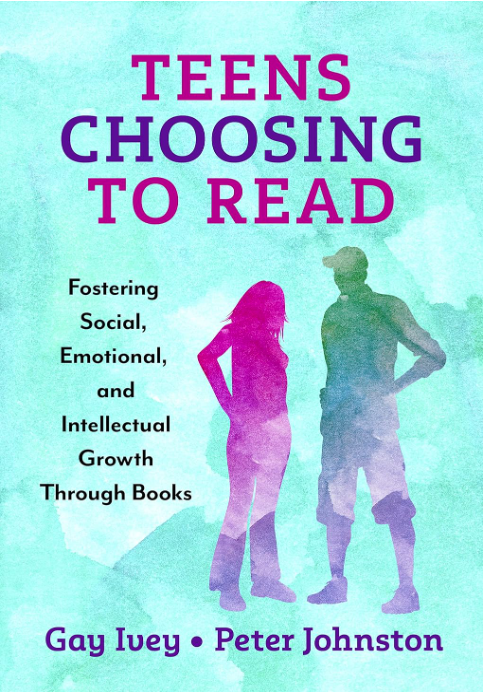
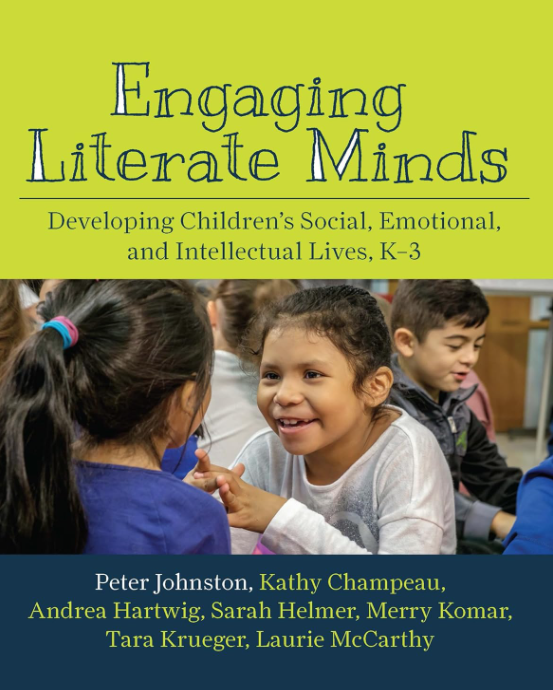
Join our mailing list and get weekly tips, tools, and inspiration that will make your teaching more effective and fun. You’ll get access to our members-only library of free downloads, including 20 Ways to Cut Your Grading Time in Half, the e-booklet that has helped thousands of teachers save time on grading. Over 50,000 teachers have already joined—come on in.

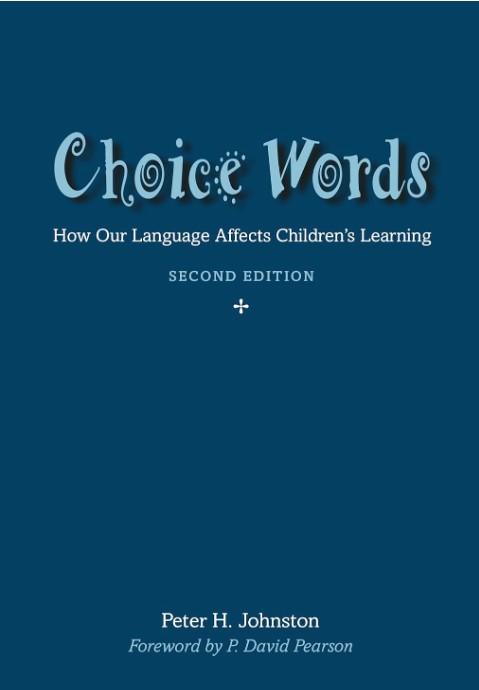
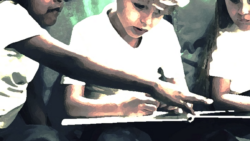
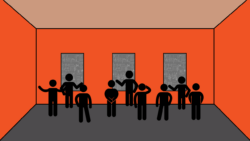


As I say in my book, “A story is neither right nor wrong. Stories are simplifications that allow our brains to rapidly make sense of a situation and take action. Stories are convenient.”